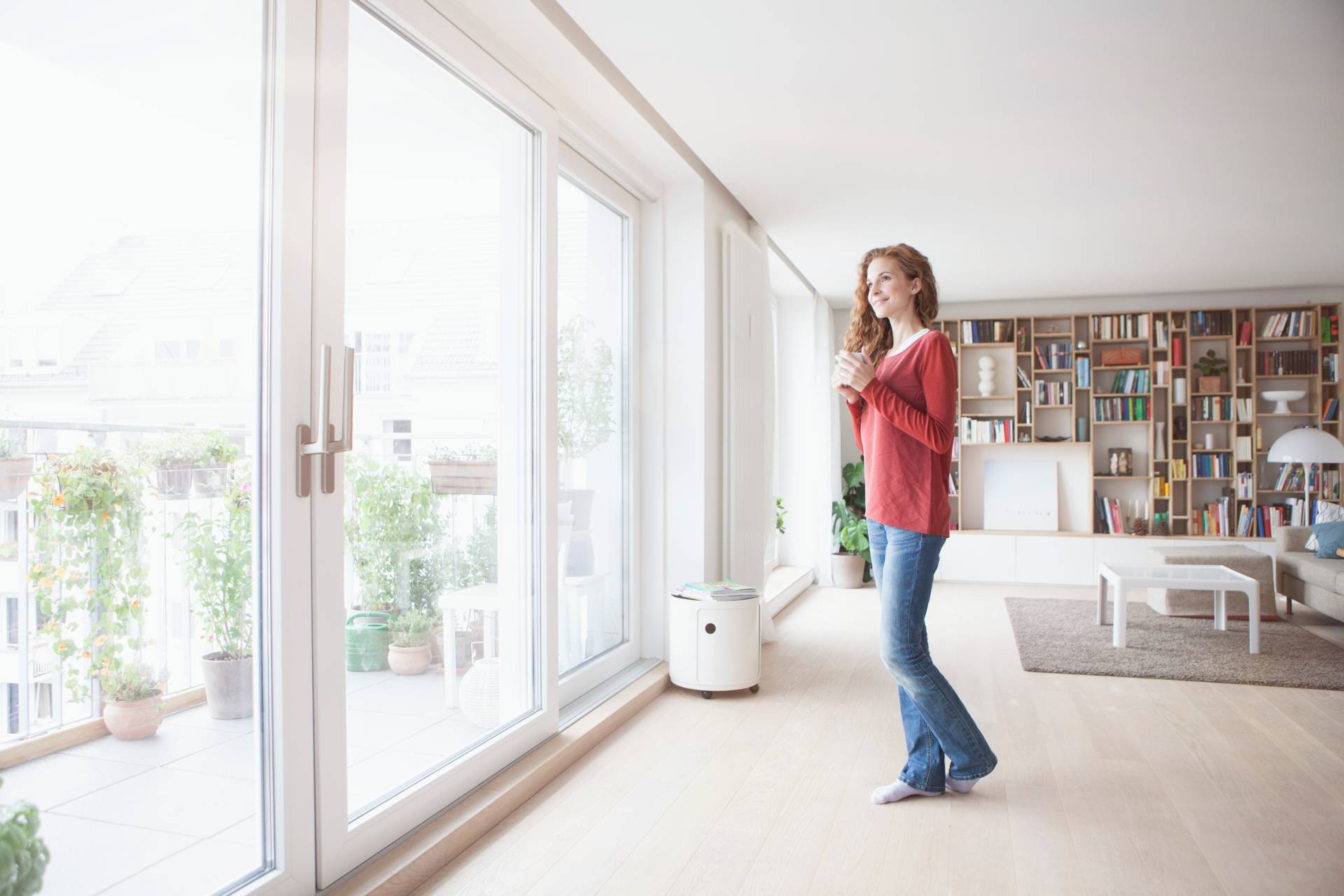
Natural light is an essential aspect of our homes. Rooms with abundant natural light feel more inviting, vibrant, and spacious than rooms that depend mostly on artificial lighting. The warm glow of natural light can bring out the colors of furniture, décor, and architectural features and can create an environment conducive to creativity and productivity. Well-lit rooms with abundant natural light can make us feel comfortable and can help us focus on our tasks at home. Furthermore, utilizing natural light reduces the need for artificial lighting during daylight hours and can promote energy efficiency at home.
Sunlight enters our homes through various openings, such as windows, skylights, and glass doors or panels. Here are five ways to bring in more natural light into your home:
1. Strategic Window Placement
When designing or renovating your home, consider the placement and size of windows carefully. Strategic window placement involves carefully selecting of the location, size, and orientation of windows in a home to maximize the amount of natural light that enters the space. It takes the sunlight’s path into account as well as the specific needs of each room. By placing windows on different sides of the house, you can capture sunlight at various times of the day. In the northern hemisphere, rooms with south-facing windows receive the most direct sunlight throughout the day whereas rooms with north-facing windows tend to receive softer indirect light. In the mornings, east-facing windows receive direct sunlight while west-facing windows receive direct sunlight in the afternoons. In addition to orientation, the size of the windows can also increase the amount of sunlight rooms receive. Communal rooms, such as living rooms and kitchens, where household members spend most time in may benefit from larger windows, which can enhance the rooms’ ambiance and functionality.
2. Skylights or Roof Windows
For homes or rooms that do not have many external walls, adding conventional windows can be challenging. Skylights and roof windows are types of windows that are installed on the roof. They can bring natural light into homes by capturing sunlight from the roof and directing it into the indoor spaces. Similar to conventional windows, skylight and roof window placement takes into consideration their orientation and angle to maximize the amount of sunlight they receive and direct indoors. Skylights and roof windows are usually equipped with transparent glazing, which allows sunlight to pass through while blocking harmful UV rays and excessive heat. Additional natural light from above can help make rooms feel more spacious and open. Skylights and roof windows can increase the aesthetic of your home and can make you feel more comfortable indoors.
Since skylights are integrated into roofs, skylights are often installed during initial construction or as part of a major renovation. On the other hand, roof windows may be easier to install than skylights. Consulting a professional who can take your needs and preferences into account may be helpful if you are considering the installation of a skylight or roof window.
3. Light Colors and Reflective Surfaces
Light colors, like white, beige, or pastels, reflect light and can enhance natural light in homes. Rooms with walls, floors, and furnishing in light colors tend to feel bright and spacious. Using light colors in rooms can reduce shadows and complement natural light. Furthermore, light colors support daylighting strategies, utilizing natural light to illuminate indoor spaces, that maximize the amount of natural light that enters and circulates within a room. Additionally, incorporating mirrors in rooms can enhance natural light. Mirrors have highly reflective surfaces that reflect light back into the room. Strategically placed mirrors can bounce natural light from windows and distribute light more evenly throughout the room. Using a combination of light colors and reflective surfaces can complement natural light and make rooms look brighter.
4. Removal of Obstructions
Obstructions to windows or other openings can decrease the amount of natural light that enters a room. Large trees, overgrown bushes, or large structures can cast shadows and block sunlight from entering your home. Trimming back overgrown branches or removing obstacles will allow more natural light to enter your home. Another set of obstructions that can affect the amount of natural light that enters your home is the dust, dirt, and grime on windows. These can diffuse the light through your windows. Clean windows will have higher transparency and will allow light to enter your home without distortion. As such, regularly cleaning your windows and glass surfaces will allow more natural light to enter your home.
5. Lightweight Window Treatments
Window treatments are coverings or accessories, such as curtains, drapes, blinds, or shades, which are attached to or near windows. Window treatments enhance aesthetics, provide privacy, control light, and regulate temperature in your home. Window treatments allow you to control the amount of light that enters your home and gives you the flexibility to control the ambiance in your home. While it is important to maximize the amount of natural light that enters your home, lightweight window treatments such as sheer curtains can help diffuse and soften light. Window treatments can reduce harsh glares and shadows in the room and can help maintain comfortable temperatures in your home. Furthermore, using lightweight window treatments will allow you to enjoy natural light during the day while maintaining your privacy at home.
Bringing in more natural light into your home can make your home feel more comfortable and spacious and can help improve your mood, productivity, and well-being. If you plan to renovate your home, consider consulting a professional who can assess your goals, needs, and preferences and recommend the appropriate windows and siding to maximize the amount of natural light in your home.
